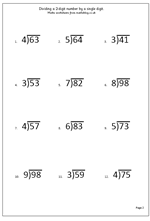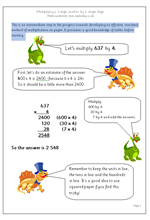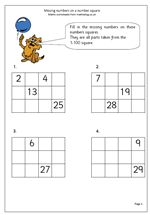 When parents come to help their children with maths it is often division which is the most problematic area. Frequently it is the parents who claim they do not understand the ‘modern methods’ used in school today. The final efficient, or standard method of division is much the same method as it has always been: it is the stages that are used to reach this standard method which cause most confusion. These stages, or steps are aimed at providing children with an understanding of the whole process, although I believe that sometimes they can lead to more confusion.
When parents come to help their children with maths it is often division which is the most problematic area. Frequently it is the parents who claim they do not understand the ‘modern methods’ used in school today. The final efficient, or standard method of division is much the same method as it has always been: it is the stages that are used to reach this standard method which cause most confusion. These stages, or steps are aimed at providing children with an understanding of the whole process, although I believe that sometimes they can lead to more confusion.
Here we have one of these steps towards an efficient method.
77 ÷ 4
4)77
– 40 (10 × 4)
1137
– 36 ( 9 × 4)
0111
Next, take away a tens multiple of the divisor (4). 10 x 4 = 40.
Subtract 40 from the 77 leaves 37.
Then ask, ‘How many 4s in 37?’
9 x 4 is 36 so it is 9 with a remainder of 1.
Add the 10 and the 9 which makes 19.
Answer: 19 remainder 1.
All these questions have a single tens multiple of the divisor. Of course, this will not always be the case as questions become harder.
Division: 2 digit by 1 digit (pg 1)

